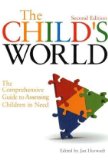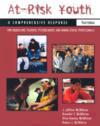Self-Esteem
June 2010 - Research published in the Journal of Personality and Social Psychology found that self-esteem increases throughout adult life, peaking at around retirement age but declining thereafter. Health and income are significant factors in the maintenance of self-esteem.
Lead author, Ulrich Orth, PhD, of the University of Basel said:
"Self-esteem is related to better health, less criminal behavior, lower levels of depression and, overall, greater success in life. Therefore, it's important to learn more about how the average person's self-esteem changes over time."
The study recruited 3617 men and women living in the United States and aged between 25 and 104 who were interviewed on four occasions between 1986 and 2002. Self-esteem was assessed by asking participants the extent to which they agreed with statements such as:
- "I take a positive attitude toward myself"
- "At times I think I am no good at all" and
- "All in all, I am inclined to feel that I am a failure."
Data were also sought concerning ethnicity, education, income, work status, relationships, marital status, health, social support and experience of major stressful life events such as bereavement, sudden unemployment or being the victim of violent crime.
In general, education, income, health and employment status all affected levels of self-esteem, especially as participants aged. Researchers found that, on average, women had lower self-esteem than men throughout most of their adult lives, but levels tended to converge after the age of eighty. Blacks and whites had similar levels until old age, when average self-esteem among blacks declined much more steeply than among whites, even after controlling for differences in income and health. The study concludes that these ethnic differences merit further research.
Ulrich Orth explained:
"Specifically, we found that people who have higher incomes and better health in later life tend to maintain their self-esteem as they age. We cannot know for certain that more wealth and better health directly lead to higher self-esteem, but it does appear to be linked in some way. For example, it is possible that wealth and health are related to feeling more independent and better able to contribute to one's family and society, which in turn bolsters self-esteem."
The researchers found that people of all ages in satisfying and supportive relationships tend to have higher self-esteem. However, this group experienced the same drop in self-esteem during old age as those in unhappy relationships.
Co-author Kali H. Trzesniewski, PhD, of the University of Western Ontario commented:
"Although they enter old age with higher self-esteem and continue to have higher self-esteem as they age, they decline in self-esteem to the same extent as people in unhappy relationships. Thus, being in a happy relationship does not protect a person against the decline in self-esteem that typically occurs in old age."
The researchers point to a number of theories to explain why self-esteem peaks in middle age and drops after retirement. Co-author Richard Robins, PhD, of the University of California, Davis said:
"Midlife is a time of highly stable work, family and romantic relationships. People increasingly occupy positions of power and status, which might promote feelings of self-esteem. In contrast, older adults may be experiencing a change in roles such as an empty nest, retirement and obsolete work skills in addition to declining health."
Researchers think it unlikely that baby boomers will show different characteristics as they reach retirement age. However, they acknowledge that this group will tend to experience good health until later in their lives, giving the potential for continuing in work and maintaining income and independence.
Reference
"Self-Esteem Development From Young Adulthood to Old Age: A Cohort-Sequential Longitudinal Study," Ulrich Orth, PhD, University of Basel, Kali H. Trzesniewski, PhD, University of Western Ontario and Richard W. Robins, PhD, University of California, Davis; Journal of Personality and Social Psychology, Vol. 98, No. 4.
Related Articles
 The Child's World: The Comprehensive Guide to Assessing Children in Need At-risk Youth: A Comprehensive Response for Counselors, Teachers, Psychologists and Human Services Professionals |